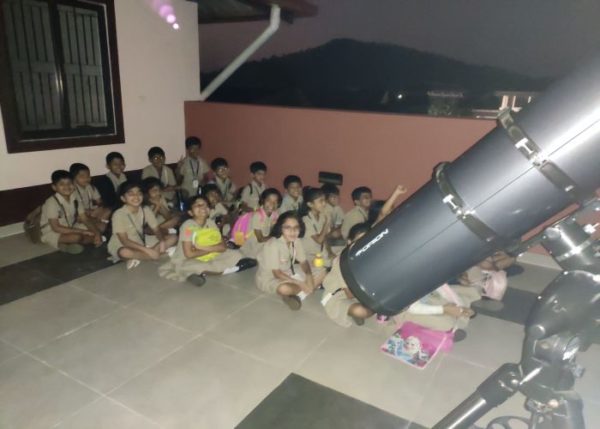Monday, January 6
Sirius now rises around 8 p.m. Orion’s three-star Belt points down almost to its rising place. On this day the moon is around 80% illuminated. The moon is almost visible throughout the night sky setting a little before sun rise.
Tuesday, January 7
The waxing gibbous 87% illuminated Moon shines in Taurus, just a few degrees left of orange Aldebaran in early evening. Spot the Pleiades farther to the Moon’s upper right, and the Bull’s horntips, Beta and fainter Zeta Tauri, to the Moon’s right and lower right, respectively. Farther below the Moon is Betelgeuse in Orion.
Wednesday, January 8
Waxing gibbous 94% illuminated Moon shines bright this day.
Thursday, January 8
The Orion Nebula (also known as Messier 42, M42, or NGC 1976) is a diffuse nebula situated in the Milky Way, being south of Orion’s Belt in the constellation of Orion. It is one of the brightest nebulae, and is visible to the naked eye in the night sky. The Orion Nebula is a massive cloud of gas and dust around 1,300 light years from Earth and is located in the constellation of Orion. It is around 25 light years across and is the closest star forming region to Earth.
Week’s Planet Roundup
Mercury is out of sight in conjunction with the Sun.
Venus dominates the sky during and after twilight, higher each week. It will shine as the grand “Evening Star” at dusk all winter and into the spring.
Mars glows in the southeast before and during early dawn, not very high.
Jupiter is hidden deep in the glow of sunrise.
Saturn is lost in the sunset.
Uranus and Neptune stand high, right after dark.
Week’s Sky at a Glance, January 6 – 10
Published On: January 14, 2020
Category: Secondary







